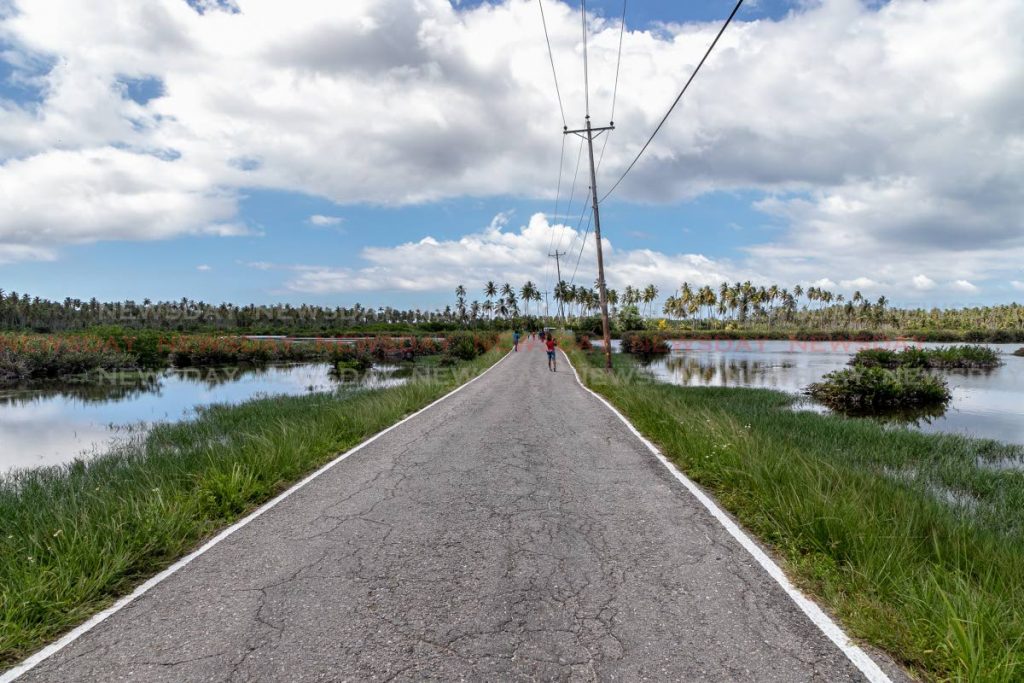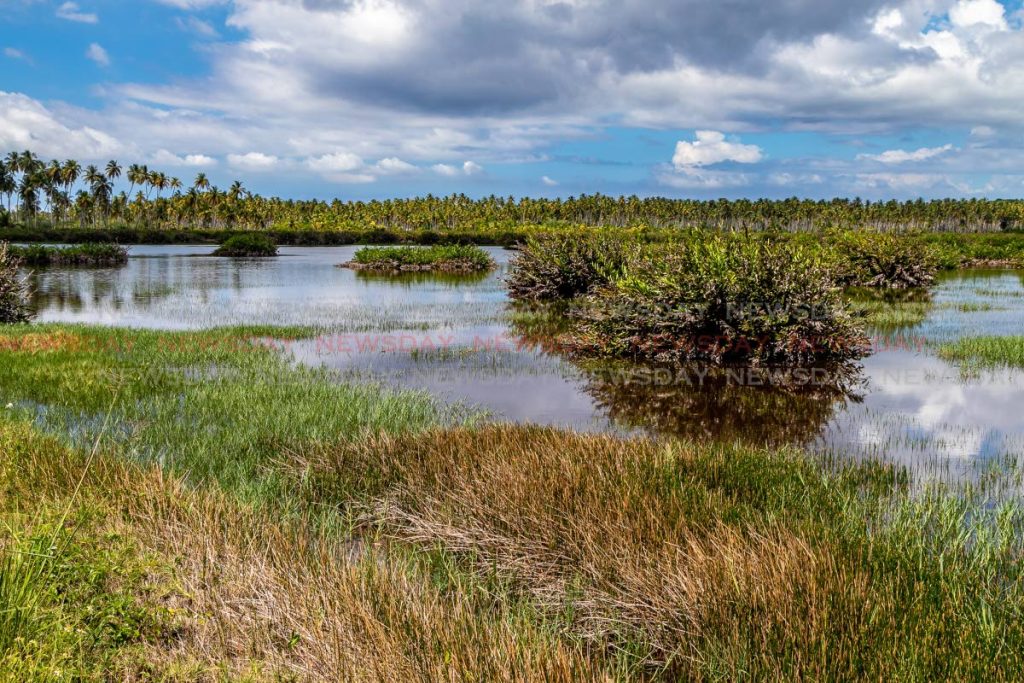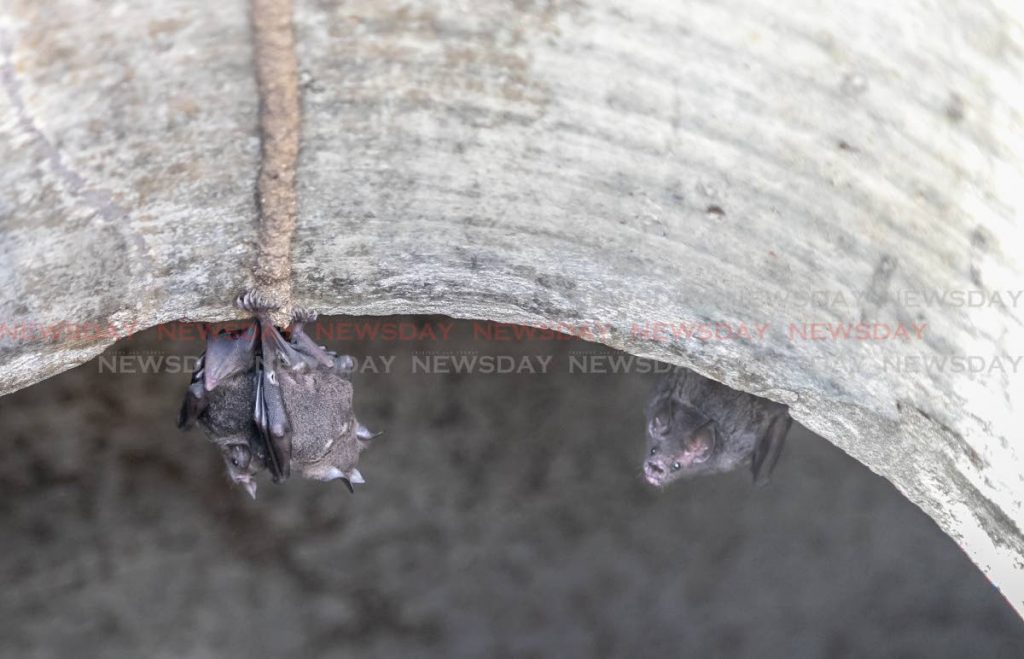Journey to the end of Trinidad

PEEKING through wasp-infested bunkers and peering at the distant shores of another country from our own are not common occurrences for a “town boy” like me. Granted, I had my own boy days in the backyards and hills of my own home town, and I’ve taken hikes to places as far as Mt S’eau Deau, but taking a tour with the National Trust to Icacos last month was nothing short of an adventure – one that I doubt I will experience again, unless I go back.
As one of a series of tours across the country, the National Trust took two maxi taxis' full of people to the southernmost point of the island. The information-packed tour included stops at historical and even religious sites that most people, including most Trinidadians, would not even know existed.
It wasn’t just the sites on the tour which showed a different side of TT to me. It was the simple, country life reminiscent of a Trinidad of old.
Icacos, named after a plant called the Icaco by the first Warao settlers who crossed the Columbus Channel from Venezuela, is about 123.1 km away from the capital if you take the Southern Main Road. The trip from Port of Spain down to the final point of the tour, Columbus beach, took a little more than four hours, but every second was worth it.

We drove from the high-rise buildings and busy streets of Port of Spain, past the highways and bye-passes along the Churchill Roosevelt Highway and the Uriah Butler Highway, and even further south, past the city of San Fernando and past Mosquito Creek where the sea water laps over its rocky borders and spills onto the road.
When we reached La Brea, we were told we were “halfway there.” We stopped for a bathroom break and for a moment we looked at the large expanse of black gold which is the main ingredient in the making of a modern road.
Long after the First Peoples walked past and along the vast black expanse, British colonisers claimed they “discovered” it in 1595. The Spanish, who wrested the island from British rule, began refining the pitch two hundred years later. Back then the lake was called “Tierra de Brea.” Later, they began calling it La Brea.
We travelled even further south following the winding Southern Main Road past Vessigny and Point Fortin, and made it to Cedros, where we made a second stop at Granville Beach.
Tour guides told us the area was a well-known stop for beach excursions, parties, and camping trips. We stood near the ruins of an old dock which sailors and fishermen once used, but had since been claimed by erosion from the sea. Near the ruins, rows of fishing boats sat at the edge of the shore and a few fishermen repaired nets to head back out to sea.

We travelled even further, reaching closer to our destination and further from any sign of city life. Even the houses went from being packed together and staggered by bars and small businesses, to being far apart, separated by forested areas and cleared parcels of land which were no doubt used for farming of some sort.
We got to Green Hill, which was used as a US Army base in the 1940’s, near the end of WWII. The US Army commissioned a 300-acre portion of land during that time to establish the base. When they were done, the base was fully equipped with cinema, hospital, motor pool and accommodations for the hundreds of US soldiers who were stationed there.
We got out of our maxi taxis once more to peek at the bunkers left behind by the US soldiers. Near to the bunkers were large circular tracks, which were used to operate massive rotating guns placed by US soldiers during the war.
That part of the island is no more than a quarter-mile wide, and US soldiers placed their guns there because the mostly flat land gave the soldiers a good view of the Gulf of Paria and the Columbus channel.
When our tour arrived, there were no more US soldiers. The Yankee army had long left the bunkers behind, and they were now guarded by bats and jack Spaniards who had invaded and now occupy the underground bunkers.

We were back in the maxi taxis before long, and on to our final destination. But first we took a short detour to the Balka Devi volcano where Hindus go during different parts of the year to worship. East Indian settlers came to the island and on seeing the calm mud volcano – which is now considered as part of the collection of the L’envieusse volcanoes– they began doing pooja to the volcano, calling it “mother Balka.”
Hindu worshippers go to the volcano and give it tributes of food and flowers, to show their love and respect for the mother, and in return she remains calm. Villagers there said that volcano had never erupted.
Even further south, our tour buses stopped at the picturesque Columbus beach. The beach, which is about 4 km long, was believed to be the spot where Christopher Columbus first landed on Trinidad in 1498. It is said the ship he came in on lost its anchor the first night he landed after it was struck by a massive wave. Tour guides there also said people used to race horses there.
About 10 km away were the shores of Venezuela, and the day was clear enough that we could see the troubled country from where we stood. I stood on my shore and looked across the relatively narrow channel separating us from South America, but I did not think of Columbus. Rather, I thought of the First Peoples who might have landed on that same beach from the edges of South America hundreds of years before Columbus stumbled upon our islands.

Finally, we stopped at the edge of the Southern Main Road; at the southernmost tip of the island. We were in Icacos, and standing in the middle of the Icacos swamp.
The villagers surrounding the swamp normally make their living through fishing, whether it be net fishing, line fishing, “floating” and the more popular shrimp fishing.
The swamp, however, was nothing like I had ever seen living the city life.
Today the swamp is considered a bird sanctuary. The plant is also known as paradise plum or abajeru, but its indigenous name – Icaco – is also where the whole village got its name.
Looking at the wide, open spaces and the clear water giving life to a vast expanse of land populated with an array of flora and fauna, it did not feel as though I travelled in distance, but in time. For a moment it felt as though I had gone back to a time before the high-rise buildings in the cities, and the long, winding highways; a time before the colonisers landed; a time when government did not have to decree that the place was special and should be preserved; a time when the First Peoples saw the same land, and appreciated it.
Then I saw an empty plastic bottle floating in the otherwise clear water. It annoyed me greatly.
Before long we were back in our maxi taxis. We left the adventure behind, and were headed back to the cities and the high-rise buildings. I retuned to the capital with a wealth of memories, an education on many of the otherwise unknown parts of my country and even a bottle of mud, gifted to me from “Mother Balka”
It was a great adventure for a “town boy” like me.
NATIONAL TRUST TOURS CENTRAL
This Friday, the National Trust will host a CENTRAL HERITAGE TOUR. The tour assembles at the National Trust office on Sackville Street in Port of Spain at 8.15 am and departs 15 minutes later. Sites to be visited include: Dattatreya Yoga Centre & Hanuman Murti, Indian Caribbean Museum and Art Gallery, Sadhu Siewdass Temple in the Sea and the Divali Nagar. The tour costs $200 for members and $175 for non-members. Interested parties can contact the National Trust at 225-4750 or check www.nationaltrust.tt.


Comments
"Journey to the end of Trinidad"